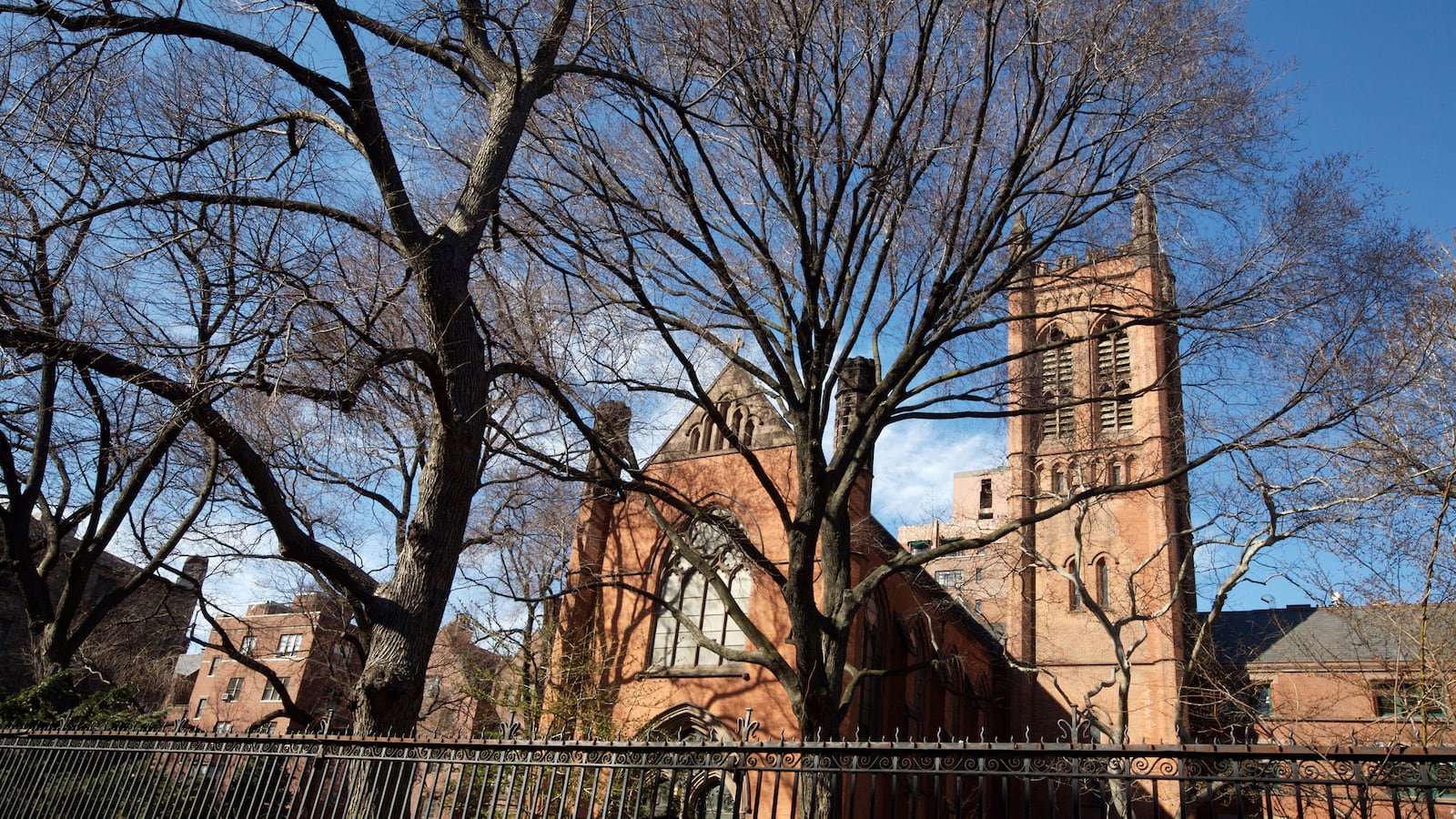For a non-believer, there is something disquieting about entering an empty church and looking down row after row of vacant pews, the ornate marble and mosaic floors, up to the altar and alabaster reredos, where inlaid statues of Jesus and friends follow your every move.
Or gazing towards the Bible stories, saints and martyrs depicted in the arched stained glass windows. And further still to the ceiling’s arched chestnut beams. It’s only then, after assimilating your surroundings, that one becomes transfixed by the chapel’s beauty, superseding that agnostic paranoia of mistakenly offending someone who might be your savior.
Such was my experience upon entering the chapel at the General Theological Seminary in New York City, a peaceful respite from the din of urban life.
This weekend, the seminary is one of 300 landmark sites in New York City opening its doors to the public for Open House New York Weekend. For those who can’t make it to Manhattan’s west side during regular business hours, Open House New York allows a chance to visit the oldest Episcopal seminary in the United States.
Inside the seminary most of its 140 students are studying for ordination or ministry as lay persons; others “for personal growth in their spiritual lives,” according to the GTS website. The seminary also offers a “Master of Arts” degree for people who want to be welcomed by the Episcopal ministry as “lay people” but do not wish to be ordained. Worldwide, the seminary has 2,400 alumni.
This weekend, city dwellers can visit the imposing brick-built seminary’s grounds in Chelsea and roam the lush campus quadrangle beneath a canopy of elm trees.
Its showcasing during Open House weekend comes at a difficult time for the institution: it is reported to be in peril—“on the verge of financial collapse,” with “paralyzing internal conflict.” There is controversy around the firings or resignations of eight faculty, with one theologian saying the crisis marked the GTS’s “death toll.”
A year after he was hired as president and dean, Rev. Kurt H. Dunkle has also come under fire for making lewd and offensive remarks. (He reportedly told one female faculty member that he “loved vaginas,” described Asians as “slanty-eyed,” and said he doesn’t want the seminary to have a reputation for being a “gay seminary.”)
Founded in 1817 by the General Convention of the Episcopal Church, the General Theological Seminary was constructed in 1826 (the oldest building on campus today dates back to 1836) on an apple orchard donated to the church by Clement Clarke Moore, a wealthy landowner who taught Hebrew and Greek to the seminarians. Moore is perhaps better known today as the author of the ‘Twas the Night Before Christmas.
The seminary community thrived through the late 19th century, but the campus remained largely undeveloped until the appointment of Dean Euegene Augustus Hoffman in 1878. Hoffman hired architect Charles Haight to design a double quadrangle and the Chapel of the Good Shepherd, modeled on the neo-Gothic campus at Oxford.
Other buildings have since been erected and then torn down or sold. In the last ten years, two buildings were converted to upscale condominiums (residents have access to campus grounds) as part of the seminary’s restructuring of finances for long-term preservation.
Most recently, student housing built in 1895 was sold and converted to the new High Line Hotel, which preserved the seminary’s original stained glass windows, fireplace mantles, staircases, and moldings.
Money from sales of these buildings has been well-spent on restoring other seminary landmarks like the refectory, an enormous dining hall (3,500 square feet) that resembles the fictitious one in Harry Potter, with its dual, five-foot-tall fireplaces and vaulted coffered ceiling.
While it may be beset by grave internal crises, the seminary remains an architectural marvel—and, as visitors this weekend may discover, as much a psychological sanctuary for the city’s frazzled minds as a spiritual one.
*Other sites to check out this weekend:






